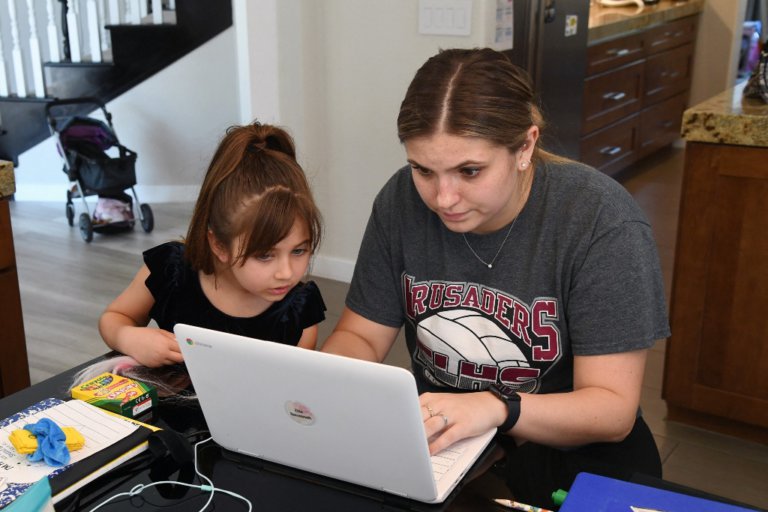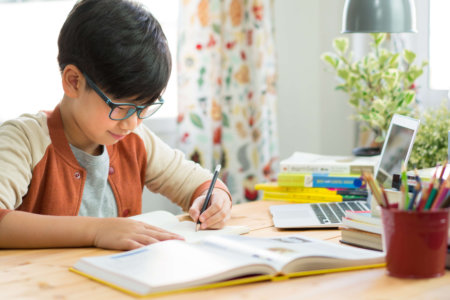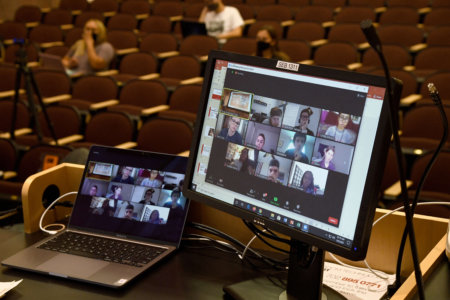
As of next year, a Melbourne private online school will open to online-only enrolments for years five to 12, embracing the norm of online education.
It will cost 18,000 Australian dollars per year in fees and parents will have to supervise their child the whole time they are “at school.” It is billed as giving families flexibility and providing opportunities for those who live far away from the online school. This comes as new data shows there has been a 44% rise in students homeschooling in Victoria since 2019.
There are good reasons why the mainstream school system does not work for some students. And there are multiple options for families to explore if they are considering learning from home.
Online school: At-home education in Australia
With a small population spread across a vast continent, Australia has a long history of distance and at-home education. There are public distance education schools in all states and territories.
Access and pricing depend on your state or territory. In Queensland, for example, anyone can access state distance education. Those who are “homeschooling by choice” are required to pay around A$1,600 for the service; those who are “homeschooling by limited choice” don’t have to pay. In Western Australia, it is also available to students who require more “flexibility” or who want to study subjects not available at their school.
It may also suit students who are geographically isolated or whose circumstances mean they are unable to access school on a regular basis, perhaps because of health issues or extracurricular commitments such as elite sports training.
We also know in-person learning may not suit students with special education needs, such as those with autism or ADHD, students who are bullied, or those who feel the school system does not suit them.
Learning away from the mainstream system can also help accelerate gifted students.
In the wake of COVID lockdowns, many of these children have drifted toward homeschooling or private, often Christian, distance education offerings instead of going back to in-person learning at school.
Online school enrolments have been rising
Mainstream school has been losing enrolments for a number of years – even before COVID. Home education/homeschooling is the fastest-growing education cohort in the world.
A recent study found that, in Australia, it’s grown 53% compared with the next closest alternative, independent schools. There were around 26,000 young people home educating in Australia in 2021 out of about four million school students overall, and that number has grown since then.
But at-home learning is not limited to home educators, nor is it new. Distance education, particularly by choice and among those in city or regional areas, has also seen significant growth in the past few years.
There is some evidence that many parents would like to keep their children home, at least some of the time, if they could. Some parents report they wanted more time with their children, or they want more control over they way their children learn.
The issues faced by many young people in mainstream schools, as well as high rates of anxiety diagnosed among young people, suggests there is a market for more flexibility at school. School refusal also appears to be on the rise.
While it requires a lot of parental support, those families who can find the flexibility in their lives to support this school enrolment might find it suits their child, even for a limited period of time.
Some studies suggest this approach is effective because it allows parents and educators to better meet the child’s learning needs.
What options do you have?
Most parents and students prefer the mainstream system, but for some, it doesn’t meet their needs or they want something different.
If you would like to enrol your child in a 100% online school, but don’t have the time to supervise your child all day or A$18,000, there are some alternatives.
In Victoria, parents can enrol their child part-time in school and keep their child home the rest of the time. This option is at the principal’s discretion and needs to be negotiated with the school.
There are also other, private distance education schools that do not charge as much as this Victorian school. These include some secular options.
If your child is around 15 or older, TAFE might be an option and it may also provide avenues into higher education.
And there is always homeschooling, in which parents take full responsibility for their child’s learning, independent of a formal educational institution.
Whatever parents decide, if in-person, mainstream school is not working for your child, the chances are, if you look around, you’ll find something that might work better. Your options might be a lot cheaper than A$18,000, too.![]()
Rebecca English, Senior Lecturer in Education, Queensland University of Technology
This article is republished from The Conversation under a Creative Commons license. Read the original article.










